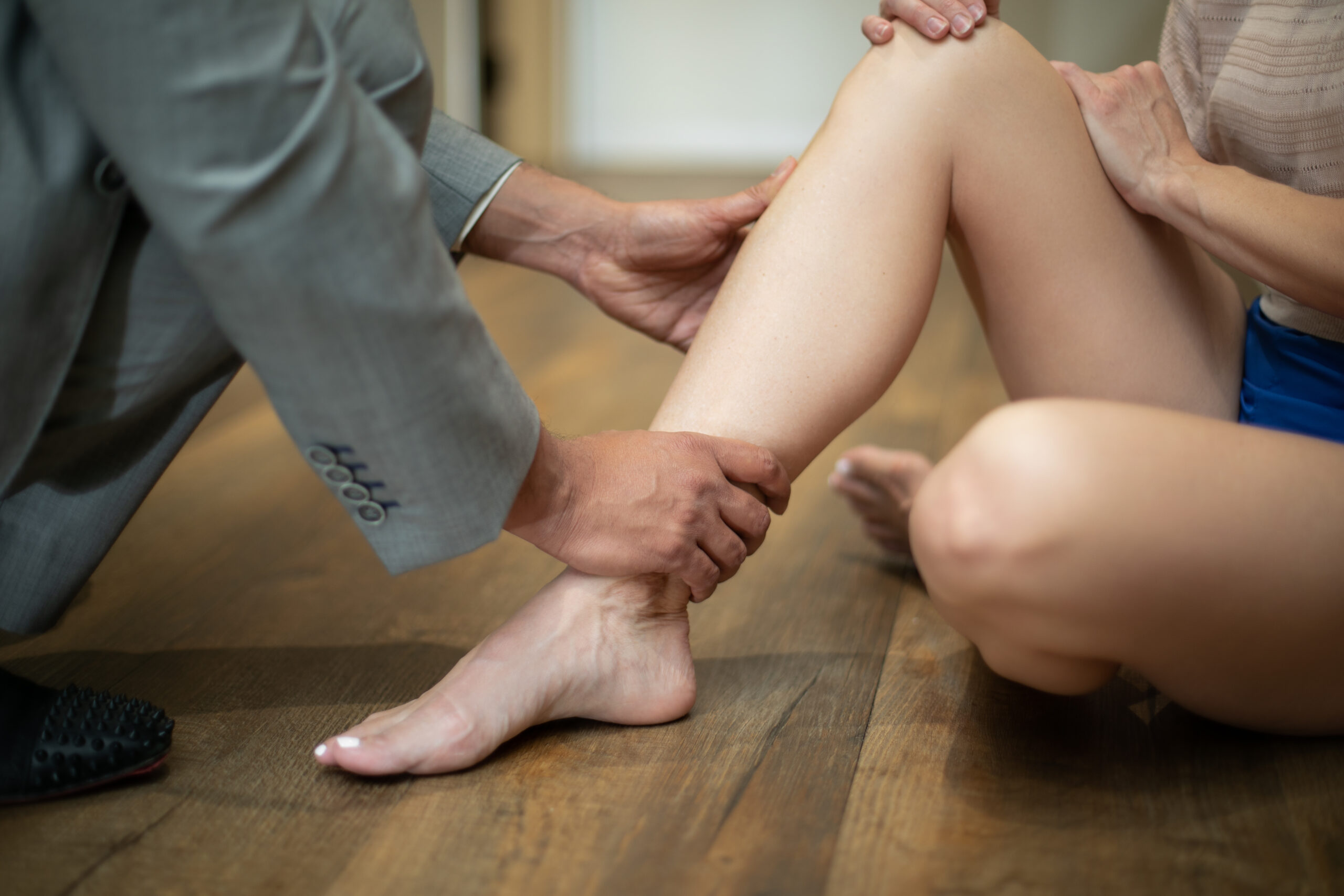Leg Wounds: Sign of Underlying Vein Disease
Uncovering Leg Wounds: A Sign of Underlying Vein Disease

Leg wounds are a common and often overlooked medical concern, affecting millions of individuals worldwide, including here in the First Coast Jacksonville and South Georgia area. While they can occur for various reasons, leg wounds can sometimes be an indication of a more profound underlying issue—vein disease. In this article, Dr. Ragu Murthy, vein specialist and cardiologist at Well&You vein clinic in North Florida, will explore the connection between leg wounds and vein disease, shedding light on how recognizing this association can lead to earlier diagnosis, effective treatment, and improved overall vascular and vein health.
Understanding Vein Disease
Vein disease encompasses a range of conditions that affect the veins in the body, with one of the most common being Chronic Venous Insufficiency (CVI). CVI occurs when the valves in the leg veins do not function properly, leading to the backward flow of blood and increased pressure within the veins. Over time, this can cause various symptoms and complications, one of which is leg wounds.
The Link Between Leg Wounds and Vein Disease
Leg wounds related to venous disease are often referred by vein specialists like Dr. Murthy of Well&You vein clinic to as venous ulcers or stasis ulcers. These wounds typically occur on the lower legs and are slow to heal, sometimes persisting for weeks, months, or even years. Several factors contribute to the development of venous ulcers in individuals with venous disease:
1. Increased Pressure: The impaired venous valves result in increased pressure within the veins of the lower legs. This elevated pressure can lead to tissue damage, ultimately resulting in ulcers.
2. Inflammation: Chronic venous insufficiency can cause inflammation in the surrounding tissues, further hindering the healing process.
3. Reduced Oxygen and Nutrient Supply: Inefficient blood circulation deprives the tissues of oxygen and essential nutrients, impairing the body’s ability to heal wounds properly.
4. Skin Changes: People with vein disease may also experience skin changes in the affected area, such as dryness, thickening, or darkening. These alterations make the skin more susceptible to injury and ulceration.
5. Itching and Scratching: Itchy skin is a common symptom of vein disease, and scratching can inadvertently break the skin, leading to wounds.

Recognizing Leg Wounds as a Sign of Vein Disease
Given the potential severity and persistence of venous ulcers, vein specialist physicians stress the need to recognize them as a potential sign of underlying vein disease. Here are some key points to consider:
1. Persistent or Non-Healing Wounds: Leg wounds that do not respond to conventional wound care treatments or take an unusually long time to heal should be evaluated by a vein specialist physician in an outpatient vein clinic.
2. Location: Venous ulcers typically appear on the lower legs, near the ankles. If you notice wounds in this region, it’s essential to talk to a vein specialist physician about considering the possibility of venous disease.
3. Accompanying Symptoms: Patients with vein disease often experience symptoms such as leg swelling, pain, heaviness, and varicose veins. The presence of these symptoms alongside leg wounds should raise suspicion of venous disease. These patients should considering scheduling a consultation at a vein clinic with an expert vein specialist physician.
4. Skin Changes: Pay attention to any changes in the skin’s appearance, such as dryness, discoloration, or thickening. These changes may precede the development of ulcers.
Conclusion
Leg wounds are not always a simple skin issue; they can sometimes be a sign of underlying vein disease, particularly Chronic Venous Insufficiency (CVI). Recognizing the link between leg wounds and venous disease is crucial for early diagnosis and effective management. If you or someone you know is dealing with persistent leg wounds, consult with a qualified vein specialist like Dr. Ragu Murthy of Well&You. Timely intervention and proper treatment can not only promote the healing of existing wounds but also prevent the development of new ulcers, ultimately improving overall vascular health and quality of life.
About Dr. Murthy
For almost two decades, Dr. Murthy has saved lives, healed wounds and relieved debilitating pain, restored people’s ability to walk, and improved their quality of life. Dr. Ragu Murthy has had the privilege of serving his community as an invasive cardiologist at the University of Florida’s busiest Trauma hospitals and as a founding director of St. Vincent’s Vein Institute in Jacksonville, Florida. A physician in high demand, Dr. Murthy pioneered and performed deep and superficial vein procedures — from advanced deep vein treatments to treatment of symptomatic varicose veins.
About Well&You
Well&You is making vein and vascular health kinder, easier, and better. Our roots in cardiology means we think holistically about bodies, hearts, minds, families and communities. We focus on health and the quality of living.